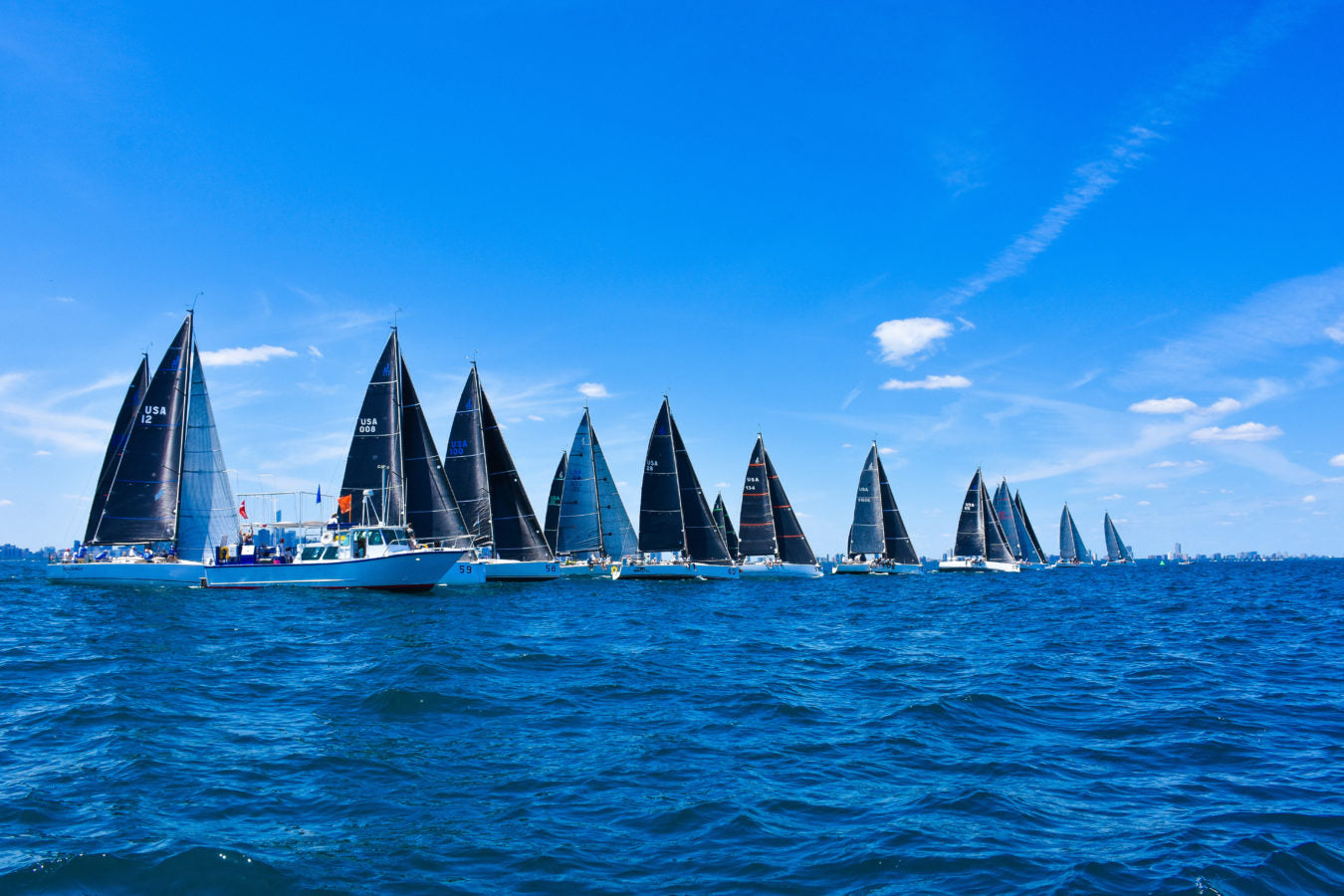SPEED READING: J/111 PRE-WORLDS
SPEED READING: J/111 PRE-WORLDS
Preparing For The Grand Finale

North Experts Seadon Wijsen on Skeleton Key and Allan Terhune on Velocity sailed the Verve Cup, which was also the J/111 Pre-Worlds. After three days and eight races, both teams had plenty of takeaway lessons. Here’s what they had to share.
“The racing conditions were typical for Chicago,” says Seadon. “Light and lumpy, and extremely challenging at times. Our light air speed and technique was top priority.”
Allan agrees. “There were bands of wind that came down the course, forcing you to connect the dots and stay in the pressure as long as possible. Light air boat speed was definitely a big factor, but it soon became apparent to us that getting clean starts were going to be the key to this event.”
Lessons learned from Pre-Worlds
The fleet got eight races in, a chance for both boats to experiment with settings in the search for better light air speed. Seadon’s team played with jib halyard, jib leads, and in-haulers to help transition through the wind ranges. They also tried a looser rig. “It helped our accelerations, but didn’t make much of a difference in our straight-line speed. Moving the jib lead forward helped, so maybe we were just carrying the lead too far aft in general before.”
Allan says Seadon was able to help his team with an off-the-boat observation. “We learned from Seadon that we had too much inhauler on in the light stuff. I had this inclination that if the crew was on the rail hiking, we’d need to pull the inhauler in all the way. What it actually did was close the slot and create stall, which was easy to do in the light air. Onboard we couldn’t see it, but Seadon noticed from off the boat. Too much inhaul was deadly.”
Both sailors agree that the most important thing for J/111 boat speed is keeping the boat in the right mode. You don’t want to pinch, especially if there is chop.
“You need to keep an open mind on every leg. It’s easy to doubt yourself, so you can’t focus too much on the fleet, rather sail your own race and focus on what you think will have the best outcome.”
In the light air, it was easy to over-trim the sails. “That was slow, and we had to be super sensitive to this,” said Seadon. Allan added that course corrections had to be very subtle as well. “When we felt slow, we’d put the bow down to help build speed, but if we went too far, this caused us to stall.”
Racing in Chicago, Seadon says, it’s hard to find any consistent pattern to the wind. “You need to keep an open mind on every leg. It’s easy to doubt yourself, so you can’t focus too much on the fleet, rather sail your own race and focus on what you think will have the best outcome.” Allan has sailed out of Monroe Harbor in many different classes, and he agrees. “It is very easy to think that it will always do this, or it will be this way—and it most definitely does the opposite.”

What to work on
Seadon has been racing with Skeleton Key for four years and says his team’s consistency is what’s led to their success. “Our rig tune, sail selections, and techniques through the wind ranges are all the same as they usually are. We don’t try to change much last minute, and we usually improve each time we sail.”
In the short gap between the pre-Worlds and Worlds, they have a list of things to work on. “We need to improve our leeward mark roundings. We can do that by discussing the planned maneuver, and weight placement. We are also going to look at different batten combinations for light air and windier conditions.
“The key for us is to try to improve the things we are lacking, but also focus on what works; we don’t need to reinvent the wheel.”
On Velocity, Allan says they will primarily be looking at their acceleration off the starting line, the leeward mark, and speed out of tacks.”
Looking ahead to the Worlds, Seadon admits Chicago is one of the toughest places to race—and they face some great competition. “We will have to be mentally tougher. I think we will be better in the lighter air conditions this time around. We are hoping to have a nice range of different conditions throughout the regatta, and maybe even some breeze.”
Both teams plan to sail as much as they can, and want to line up with as many boats as possible. As Allan puts it, “It’s about getting as much data as you can before the regatta starts.”

Have questions about tuning? Check out our J/111 Tuning Guide
Click here to view all of our products J/111 inventory










